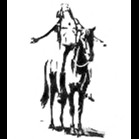-
Recently Browsing 0 members
- No registered users viewing this page.
-
Topics
-
-
Popular Contributors
-
-
Latest posts...
-
2
Report Helmet-Wielding Chaos Erupts on Pattaya Streets Amid Bizarre Stunt
Off to the asylum for him. -
-
0
90-day down? Wednesday July 16
I was able to apply online yessterday afternoon. Today I can't open any Immigration website. Any others notice this? Thx. -
19
USA Trump Slams Biden's Autopen Pardons as 'Tremendous Scandal'
Franklin D. Roosevelt granted 3,796. -
-
178
Do Foreign Men Often Move to Thailand Because They Can’t Get Women Back Home?
I came here because I was busy traveling the world and it was just the next stop. But i didn't go any further, purely because of the women throwing themselves at me (I was 24 and handsome back then!).
-
-
Popular in The Pub




.thumb.jpeg.d2d19a66404642fd9ff62d6262fd153e.jpeg)








Recommended Posts
Create an account or sign in to comment
You need to be a member in order to leave a comment
Create an account
Sign up for a new account in our community. It's easy!
Register a new accountSign in
Already have an account? Sign in here.
Sign In Now